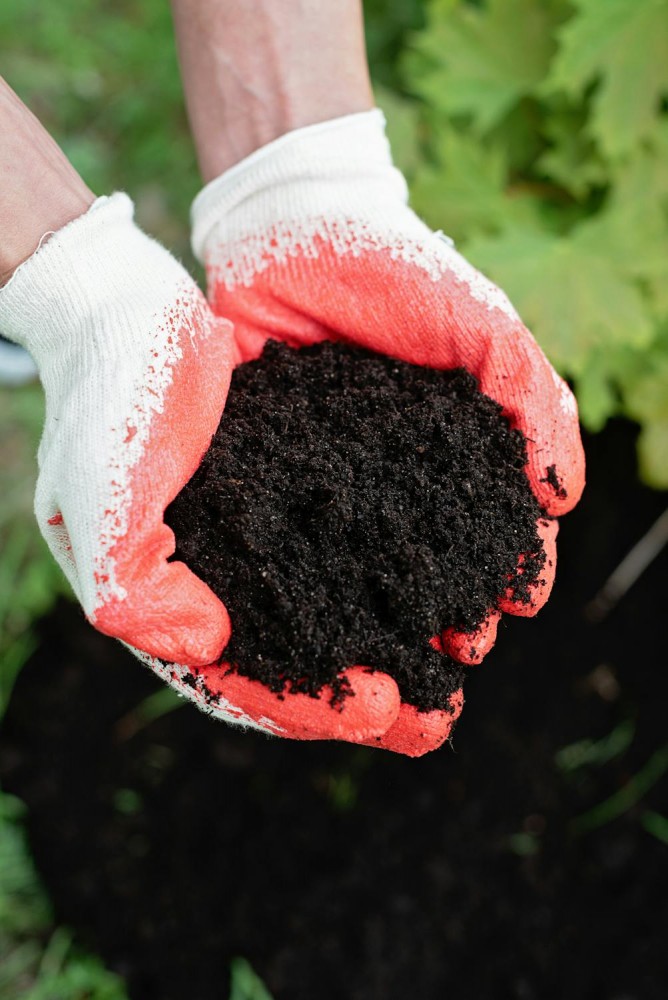Closing the Circle for Waste
For the UK to reach its net zero targets, the economy needs to become much more circular. At a large country estate in Oxfordshire, it’s a concept that has been fully embraced and Blenheim Palace has become a demonstration site for circular solutions that can also help regenerate its soil.
Behind the novel technologies being showcased at Blenheim is Tumblebug, a relatively new business founded in 2020 by entrepreneur Sylvie Verinder. “The goal at Blenheim is to show how a country estate can utilise its own unappreciated resources as assets to reduce costs and emissions, while creating business opportunities from organic materials.”

The seeds of Sylvie’s business were planted early on in life. She grew in a farming environment, but it was reading Barry Commoner’s ‘The Closing Circle: Nature, Man, and Technology’ in the late 1970s that helped set her career path in environmental sciences, which has taken her into education as well as through just about every sector in waste management.
It was during the COVID-19 pandemic that those seeds began to blossom into ideas for a new business as she was helping out a local alpaca breeder by picking up and removing manure from the field and onto a muck heap. “I realised my focus has been on the abiotic side of waste management and it made me start to think about the bioeconomy and how nutrients in organic waste could be recovered and utilised. And importantly for producers, how it could be valorised.”
At about the same time, the newly formed company was awarded a grant of approximating £100K to develop nutrient-infused compostable pots from alpaca manure. Although the solution was successful it wasn’t scalable, the technique for recovery of the value of food waste and manure was. So, attention turned to using this technique, along with other organic waste streams, to produce biochar and turn it into a peat-free compost and fertiliser.
Biochar is highly regarded for its ability to lock carbon into the soil for hundreds or even thousands of years. By converting agricultural residues and food waste into biochar using its own CHP batch pyrolysis technology, Tumblebug aims to significantly reduce the emissions released into the atmosphere, combating climate change by decreasing greenhouse gas concentrations. That, together with the biochar’s regenerative effects on the soil was enough to attract the attention of the SHAKE Climate Change investment panel in 2021.
A resulting £140K investment by SHAKE enabled the company to embark on proof-of-concept work, including greenhouse trials, to demonstrate the viability of different biochar base mixes developed with partner scientists at Cambridge Eco. “SHAKE insisted that we looked at the environmental impact of pyrolysis technologies to produce biochar, so we set out as pyrolysis agnostic and focused our attention on feedstock preparation and biochar application,” she explains.

Fast forward to 2024 and the development work has rolled out at Blenheim to provide circular solutions across its 12,500-acre estate, which is producing food and coffee waste from its catering outlets and organic wastes across its portfolio of agricultural, horticultural and forestry enterprises.
“We sought to create links between different areas of the estate in order to recover the waste they produce and remove the overhead costs for its disposal. An £80K grant for Human Centred Design from UKRI has helped us develop circular solutions which will cut Scope 1, 2 and 3 emissions and support the goal to reach Net Zero by 2027.
“We call it recover, rotate, and regenerate. We recover organic resources to reap their environmental, economic and social value. We rotate the carbon, the nutrients, the economic value, and use this to regenerate the soil, the climate, and the economy too. Socially, we are recovering and regenerating our relationship with our planet by demonstrating the value in its resources.”
Amongst the solutions being showcased at Blenheim is a mushroom farm that uses the two tonnes of coffee grounds the estate produces each month, together with its waste sawdust and cardboard. These are segregated on-site and processed though one of the company’s Ecobots to produce a substrate for growing gourmet mushrooms. The spent substrate is pyrolyzed – generating heat and biochar. This solution generates not only mushrooms for the estate and local restaurants, but also biochar fertiliser pellets for use on the farm and a peat-free biochar-based growing medium for use in the estate’s walled garden.

As well as creating value from waste products the estate is working hard towards reaching a zero unavoidable food waste milestone and is making significant savings on waste disposal charges.
The project demonstrates Tumblebug’s prowess as a circular bioeconomy solutions designer. The technologies it’s developing can also help bring circularity to urban waste, from local food waste to retailers and much larger local authority waste disposal issues as an alternative to anaerobic digestion.
“We can put our small pyrolysis unit inside a city in, say, a waste transfer station or a household waste recycling centre. Councils can use the Ecobots to significantly reduce the frequency of collections cutting costs for collection dramatically and removing lorries from high congestion areas. The value goes way beyond cutting carbon. Despite using electricity, the Ecobot consumption of power is absorbed by the large generation of heat and power generated during the pyrolysis process.”
With food waste segregation contracts to be required by law for millions of businesses from 31 March 2025, there’s a growing need for lower cost solutions. Sylvie believes it’s feasible to operate a localized hub and spoke model within city centres or for remote areas where bin collections would have to be weekly under the new legislation, turning costs into cost-positive solutions.

“The Tumblebug model supports self-sufficiency and sustainability goals by introducing not just tailored circular solutions to organic waste problems but by monetising its value,” she says.
There have been frustrations along the way, acknowledges Sylvie. She describes the business’ journey, where it’s turning linear solutions into circular ones, as ‘trying to get a round peg into a square hole’. There’s also a philanthropic element to the company that has taken a while to prove is economically sustainable as a business. “Our vision is to support other people to make money from their resources, rather than them paying people to take it away.”
Sylvie has faced significant personal challenges that have shaped her vision for Tumblebug. She has battled breast cancer twice, and despite this, she has an unrelenting work ethic and drive. Having faced her mortality, succession planning is a priority and Sylvie wants to bring young people into the business. She has also made a decision that’s hard for many founders to make – to stand aside as CEO and bring in talent with the right skill set to grow the business.
Typically, the plain talking founder is very honest about her skillset. ““I want to create a very different business model, where we can bring young people’s enterprises in and work together with shared values. I'm a scientist, I’m a critical thinker, I'm an educator, I network, I see solutions. I’m not a money person.”
And that’s where SHAKE mentorship under the program has been invaluable to her. “We not only had the investment, but we also had the help of our mentor for the year. He’s been an absolute rock and we invited him to onto the board as a non-executive director at the end of the mentorship period so that we could continue to have his ongoing advice and counsel.
“I developed business skills during the programme and as an entrepreneur, it helped me understand what an investor is looking for. It gave me the knowledge I needed at the time to develop the company until I could start building a team. Now we have a chocolate box of solutions that will ultimately help small businesses make money, while closing the circularity gap for organic resources” she concludes.